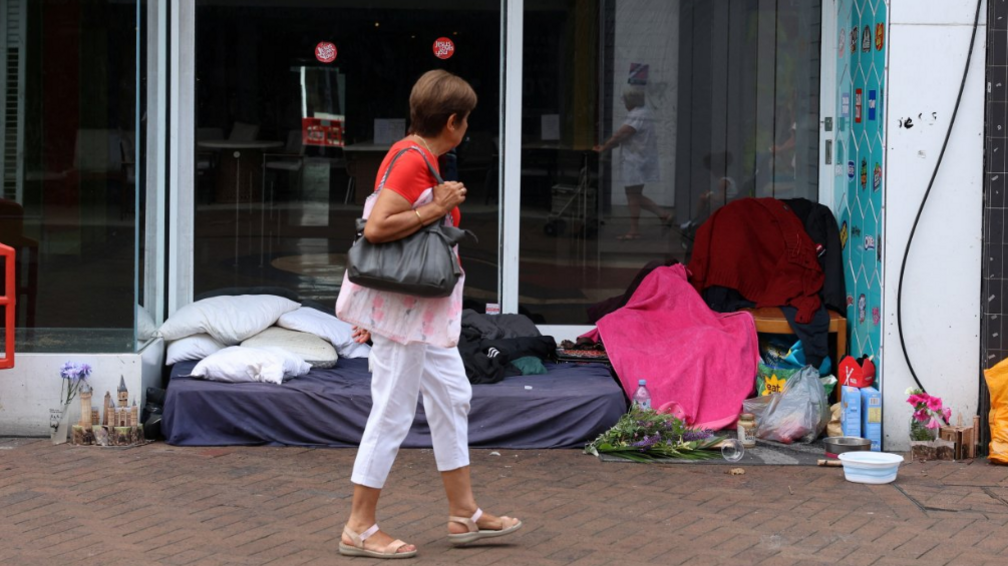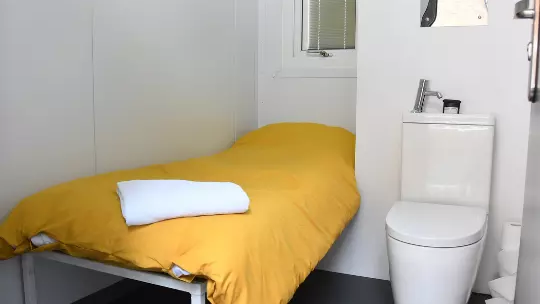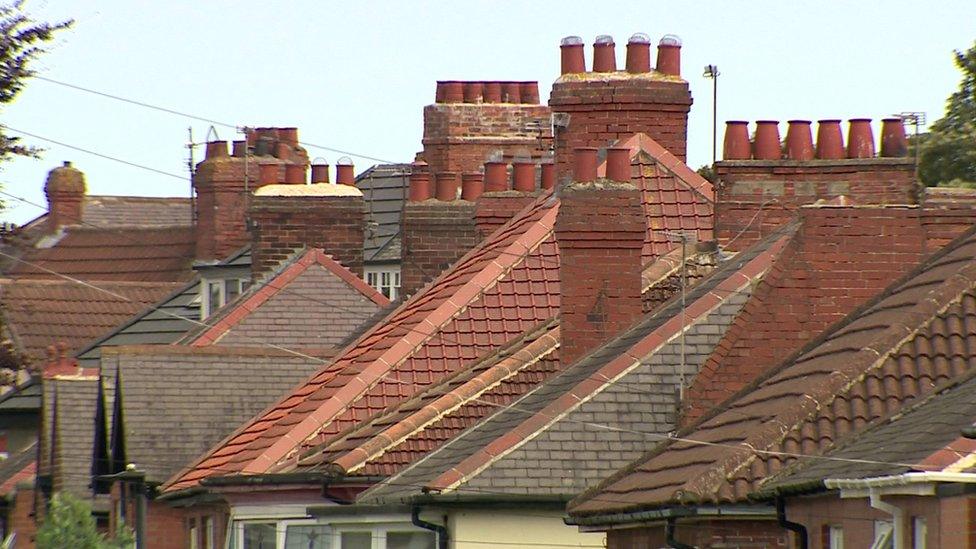Town has triple national homelessness rate

More than 94,000 households in the UK sought homelessness help from councils in three months
- Published
A town in north-east England has a homelessness rate three times higher than the national figure.
In Middlesbrough, at least six in every 1,000 households were classed as homeless between January and March this year, compared to two in 1,000 across England.
The figure is the highest in the country and contributes to the North East having the worst rate of regional homelessness outside of London.
Deputy Prime Minister Angela Rayner said the country was facing the most acute housing crisis in living history and called it a "national scandal".
Ms Rayner, secretary of state for the Ministry of Housing, Communities and Local Government, added: "Urgent action must be taken to fix this."

Angela Rayner said the government was working to provide homes for families most at risk of homelessness
The government's latest statutory homelessness figures also show nearly 87,000 households in England were eligible for council support in the first quarter of 2024 - the highest number on record and up 11% on the year before.
In the North East, 5,550 households were found to be homeless or threatened with imminent homelessness in that period, a rise of 18%.
In Middlesbrough, the figure rose by a third to 503.
The true scale of the issue is likely to be much greater, given that the data does not take into account rough sleeping, sofa surfing or those who are yet to seek council help.
It reflects those who were assessed by local authorities and deemed eligible for help because they were homeless at the time or facing homelessness within 56 days.
'To the brink'
Homeless charity Crisis said the figures "highlight how rising living costs and a lack of affordable housing are pushing more and more people to the brink".
Chief executive Matt Downie said they proved the current approach to homelessness had failed, as he called on the government to increase council funding to give more people "a safe place to stay now".
"We are at a crossroads and unless we take a different course of action, we risk seeing the homelessness system completely collapse," he added.
The deputy prime minister said the government was working with local leaders to develop a long-term strategy to "end homelessness for good".
Ms Rayner added the government was striving to deliver an increase in social and affordable housing and to abolish Section 21 'no fault' evictions.
Figures from the Ministry of Housing, Communities and Local Government show at least seven other local authorities in the North East have a statutory homelessness rate higher than the national average.
In South Tyneside, Darlington, Durham, Sunderland and Hartlepool, about three in every 1,000 households were assessed as homeless between January and March.
Data for Newcastle is not available but Gateshead, North Tyneside, Northumberland and Redcar and Cleveland were below the national average.
Follow BBC North East on X (formerly Twitter), external, Facebook, external and Instagram, external. Send your story ideas to northeastandcumbria@bbc.co.uk.
More stories from BBC North East and Cumbria
- Published28 July 2024

- Published23 October 2023
